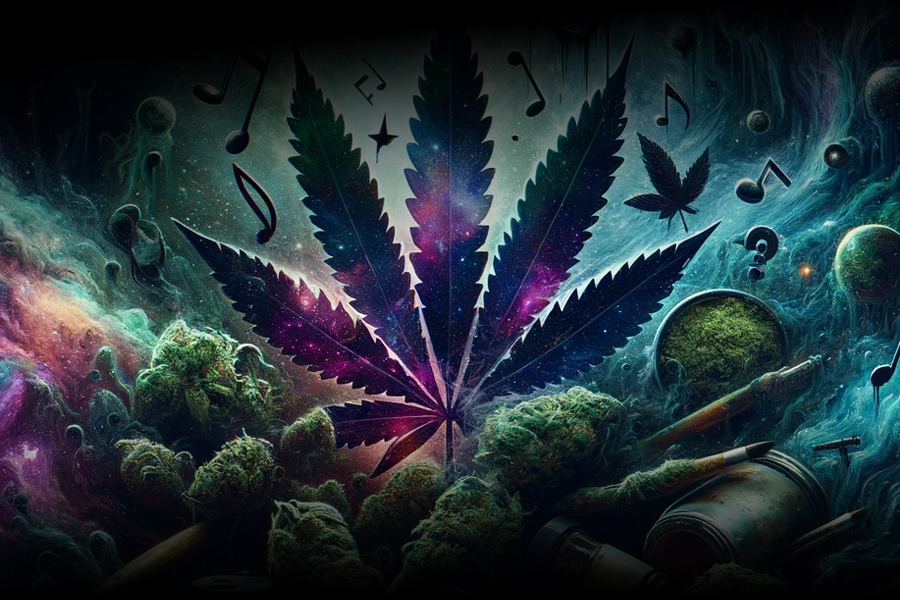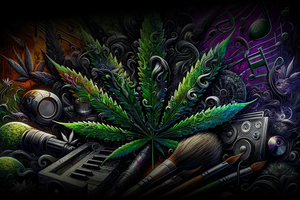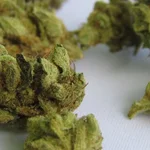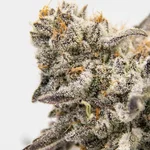The Cultural Evolution of Cannabis
From reggae icons singing its praises to stoner movies blurring stereotypes, pop culture has played a role in forming a public understanding of this multifaceted plant commonly called weed. Both accurate and exaggerated portrayals across entertainment mediums over decades have impacted opinions on policy reforms like legalization efforts. This article examines marijuana’s cultural journey through creative spheres and analyzes media’s role in evolving views.
Music’s Love Affair with Cannabis
Bob Marley was the one who brought Rastafarian culture and the natural joint weed to a higher level. Artists like Willie Nelson and Snoop Dogg helped normalize responsible cannabis consumption with feel-good lyrics. Even jazz legend Louis Armstrong was reported to enjoy the reefer. Today, genres from reggae to hip-hop continue featuring the drug’s praise while indie bands romanticize blazing up. Cannabis popularity grew alongside musical movements partly defined by devoted fan relationships with the healing weed plant.
Stoner Films: Shaping Public Thought
Comedy classics from Cheech & Chong like Up In Smoke sowed the seeds for movies depicting pot-loving characters like Half Baked. New documentaries provided educational context on topics like cultivation with shows like Weediquette. While comedies played for laughs, their familiarization was hard to miss. Representations transitioned cannabis from horrifying reefer madness depictions to a lighthearted film pastime. It softened opposition by humanizing responsible recreational or medicinal users beyond criminal stereotypes.
Cannabis in the Art World
Early artistic works captured ritual uses within cultures like Hawaii’s sacred cannabis culture. Now, high fashion incorporates eye-catching cannabis leaves and references across diverse mediums. Iconic artists, including Andy Warhol and Jean-Michel Basquiat, featured marijuana pop symbolism, elevating it from an underground motif to being discussed in prestigious galleries. Raising cannabis’s artistic visibility helped remove stigma through new perspectives. Gallery exhibits like Janis Joplin’s Hippie Mercedes celebrate counterculture icons and weed facts. The cannabis plant has an esteemed place in creative media.
The Role of Media in Reform
Changing public dialogue in mainstream channels addressed realities over reefer hysteria. Developments from documentaries to news coverage spotlighted the plant’s agricultural, cultural and therapeutic aspects. Rhetoric gradually aligned with opinion polls showing majority support for legal access and its personal liberty and economic potential interests. Reasoned discussion countered caricatures, enabling consideration of alternative policy frameworks. Representations shaped both perspectives and the ability to envision reform.
Current Cannabis Culture & Demographics
Today, the typical consumer is an employed, middle-aged professional equally likely to unwind with a Weed joint as alcohol. Cannabis culture increasingly transcends age, gender, and class demographics due to widespread exposure that is changing preconceptions associated with stoners. Licensed dispensaries provide responsibly cultivated options for both medical symptoms and casual recreational use, especially as more jurisdictions declare “marijuanas legalized”. Representations helped bring cannabis into the mainstream through cultural assimilation.
Conclusion
Through mediums conveying joy, education and self-expression, cannabis has been embedded within the popular culture over generations. Evolving realistic portrayals facilitated understanding versus misinformation and empathy instead of caricatures. With policy changes materializing, cultural integration may prove the plant’s most impactful legacy on societal relationships with this naturally healing resource. Future generations will likely regard prohibition as an aberration versus the plant’s inherent nature now integrated responsibly alongside promising applications. Pop culture served as both a driver and reflection of societal consciousness, transitioning from misguided fears toward informed inclusion.
FAQs
Q: Is cannabis viewed as ‘taboo’ anymore?
A: While underage or reckless consumption carries risks, normalized depictions across media helped establish responsible use as a safe leisure activity like alcohol in many legal jurisdictions with proper regulations. Overall, cultural endorsement facilitates regulation over prohibition’s negative impacts.
Q: Does legalization benefit societies?
A: Yes, “marijuanas legalized” access to regulated cannabis commerce supports job creation through tax-paying industries while reducing risks of unsafe illegal markets. Legalization also permits much-needed medical research opportunities stifled under prohibition.
Q: What role did pop culture play in shifting policies?
A: Representations in music, films and art helped foster public empathy over fear towards cannabis by portraying it in a realistic, complex light versus outdated scare tactics. It was a factor in building majority voter support that influenced incremental policy reforms toward legalization.
Q: How might cannabis culture evolve in the future?
A: With ongoing global cultural assimilation and progressive views, further decriminalization and legalization seem inevitable. Scientific understanding will continue expanding CBD and THC medical applications while preserving safe consumer freedoms and tight regulations as the normalized weed plant finds its dignified role in open societies.














